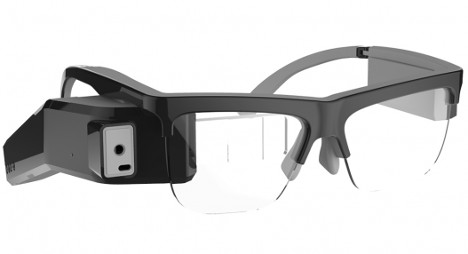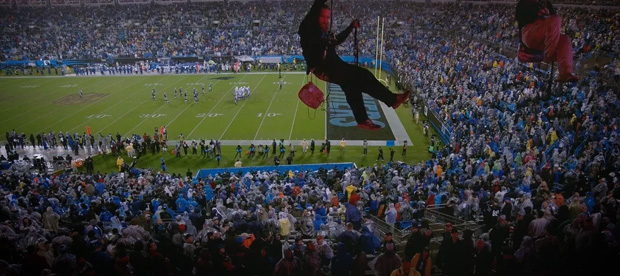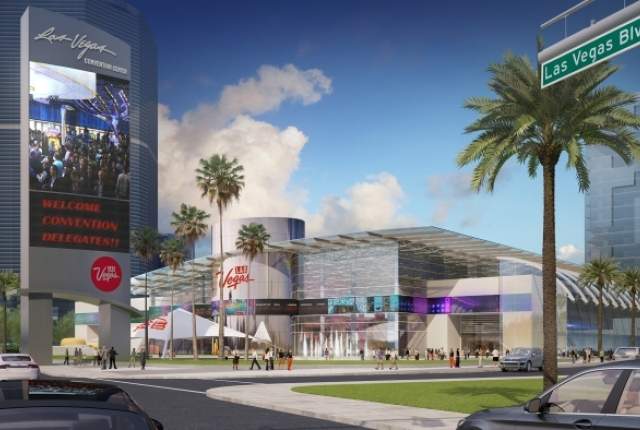MLS Plans to Expand to 28 Teams
The other Jason isn’t here to give you a soccer update, so I’m taking a shot. This week’s news? Major League Soccer (MLS) expansion.
After the league’s Board of Governors meeting on December 5, the owners announced support for future expansion to 28 clubs. The process and timeline will be detailed at a later date.
“There is no shortage of demand for MLS expansion teams, and we believe the opportunity exists to grow beyond our current plans,” MLS Commissioner Don Garber said in a statement. “During the next few months, we will evaluate the possibility of growing the league to 28 teams and establish a process and timeline should we decide on further expansion.”
More teams means more job opportunities for venue professionals.
The current expansion plan is for 24 teams by 2020. Atlanta, Los Angeles, and Minnesota will join MLS during the next three years. The owners are also in favor of David Beckham’s Miami expansion plan.
“We are very supportive of Miami Beckham United’s plans to build a soccer stadium in the City of Miami’s Overtown neighborhood,” Garber said. “Their vision for a world-class venue within the urban core that is accessible by mass transportation is impressive, and we believe it will be an important part of the continued revitalization of the area. We look forward to working with David and his partners to finalize plans to bring Major League Soccer to Miami.”
And that is your soccer news this week.
(Image: Twitter)
French Theatre Offers Reality Specs
Le Comedia theatre in Paris is offering non-French speaking guests glasses that project translations right in front of their eyes.
“It’s very similar to Google glasses, except the screen is larger and the words are positioned closer to where you’re looking,” Carl de Poncins, co-founder of the theatre, told The Local. “It’s a lot less effort from a user standpoint—you see the words on a virtual and transparent screen.”
The theatre, IT company Atos, and eyewear company Optinvent partnered to develop the concept, and translations will be available in six languages. And according to de Poncins, things are just getting started with theatres embracing augmented reality.
“We are just seeing the tip of the iceberg when it comes to breaking down the language barriers in theatre,” he said.
(Image: Optinvent)
Safety Changes and the Fan Experience
It started with a sign and grew to an act of terrorism. Security protocols and prohibited items lists across the country went under review when a couple of activists decided to send a message to Bank of America at a Carolina Panthers game. Eleven days later, the first ever terrorism attack on a stadium and the equally horrible acts that followed in Paris. Now most venues are looking at the entire scope of their security plans.
The activist group that decided that repelling at a NFL game would be a good idea was very misinformed. No matter the message they were trying to send or how skilled they are at repelling, they still put their lives and others’ lives at risk. It is not my place to speculate on how they pulled this off, but reading current events is what keeps us sharp. This led me to look at the prohibited items lists for stadiums across the country. Nothing I have found to date mentions anything about rope or climbing gear, however most do include that the stadium has the right to prohibit any items they consider a security risk. The one thing that a written policy like this doesn’t include is human error. If we’re honest with ourselves, most of our staff has not seen climbing gear or other unknown items people may try to bring in the future. We can sit here and write page upon page of prohibited items, but what we need to do is train (and constantly re-train) our staff to ask questions or stop guests at the gates if someone has an unusual personal item.
Signs have been a part of all sports from the beginning. Taking away signs isn’t the answer but setting size limits and rules around proper usage is probably the next best thing. Most stadiums and venues already have these policies in place and probably haven’t had any issues. Personally, my experience has come from working at stadiums with an MLS tenant and I like the approach they’ve made. There is the typical wording about obstructing others’ views/stadium signage, attaching signs to poles, attaching signs to stadium walls/rails, and what type of material a sign is made of. However, most teams have a supporters section where designated members can get access to the stadium before gates open to attach banners to stadium property, set up flags on poles to wave, and use extra noise makers (ex: drums). In addition, these items live at the stadium and are brought in and out of storage by stadium staff before and after each game to avoid any confusion at the entry gates.
Tragedy is an understatement for what happened in Paris, and we need to learn from it. Stade de France faced three suicide bombers and none of them made it past the entry gates. I’m not sure if any or all three actually attempted to enter, but I would like to think that the stadium’s security saved hundreds, or maybe thousands, of lives. On the other hand, at the Bataclan reports stated that 89 lives were lost during the terrorist attacks. I am unaware of the levels of security at this venue, but this is something we have to prevent. It is interesting to see the different levels of security at various venues, and minimal standards are needed. The NFL has possibly set the bar, with most stadiums incorporating two perimeters, one to help reduce prohibited items at the gates, and then again at the gates themselves. Once you’re at the gate, your bag is checked and you will walk through or be wanded by a metal detector. This is a similar gate process that you will experience at other professional stadiums and arenas. It is important that fans understand why these checkpoints are in place, and their safety is worth any delay entering any venue.
This attack has prompted the National Fraternal Order of Police to file a protest against the NFL to change their policies on off-duty officers’ ability to carry during a game. I can see the argument on each side of the table and understand that now more than ever the point to have more weapons for defense does make sense. Nevertheless, this reminds me of an emergency response training I took through FEMA. In the state of emergency, first responders set up an incident command to evaluate the situation, make tactical decisions, and deploy resources. Life isn’t the movies and a Steven Seagal character will probably not be there to save the day. It is important that anyone with any training helps get who they can to safety, and if able to further aid, report to their station to get further information and deployment.
Implementing changes to prevent either of these breaches of security in the future will have several effects. First, expenses will increase as most venues may need to add staff, equipment, or spend more on training, and second the fan experience will change.
Do the changes your venue makes increase the screening time for each guest?
Does this lead to longer lines at the entrance?
If yes, how do you manage the lines to reduce the amount of guests in one area outside the stadium?
Do we prohibit or encourage off-duty officers to carry firearms?
If yes, what do you do if you catch an officer with a beer in hand?
How do you protect the outside areas of your venue?
What type of information and intelligence can we gather beforehand?
What should the max number of items be for a prohibited items list, knowing how much an average worker/guest can remember?
Do you allow fans to still bring signs to games?
What is the proper amount of time spent to train a staff member?
Is it possible to add lines of protection without adding a cost?
Where do safety and security end and an enjoyable guest experience begin?
These questions and the increased awareness and internal reviews should just be the start of larger conversations that should spread across all venues no matter the size or type of events hosted. A general security plan does not fit all buildings or budgets but the collaboration between ourselves and local law enforcement should be at the forefront of discussions. This is where networking not only helps your career but your current employer. I leave this as an open discussion for all to partake.
News You May Have Missed
These are selected news articles that showed up in our inboxes on Monday morning that we want to pass along to you.
Panel Members Get Detailed View of $2.3B Las Vegas Convention Center Redo (Las Vegas Review-Journal)
“The committee took the information under advisement in the fourth of five fact-finding sessions and will revisit it early next year when it undertakes prioritization of projects and identifying potential funding sources.”
Cincinnati Bengals Head Groundskeeper Shares Best Practices About Often Overlooked Part Of Sports (SportTechie.com)
“For those not familiar with the term, fraze mowing is a technique employed by sports turf managers which removes weeds, organic matter and vegetation from the top of the field.”
Frank Lloyd Wright-Designed Monona Terrace Convention Center Awarded LEED Gold in Building Sustainability (3BL Media)
“The facility has steadily attracted green conferences and conventions, demonstrating a return on the investment in the 2007 Silver certification and 2015 Gold recertification process.”
Perth Stadium Build Reaches Highest Point (The West Australian)
“Part of the new Perth Stadium has reached its maximum 42m height with the first of 50 roof trusses installed.”
The Top 15 Sporting Events That Blew Up Twitter in 2015 (Mashable)
“The year didn’t include a men’s World Cup, so that eliminated an obvious winner. The Women’s World Cup, however, finished third in Twitter’s end-of-year rankings. And the Super Bowl? It’s way down in eleventh place — but we’ll explain why.”
(Image: Las Vegas Convention and Visitors Authority)
Welcome, New IAVM Members!
Please welcome our newest members who joined IAVM May-October 2015—a total of 497 new members. That’s great news, because it shows your network of professionals is growing. Thank you for being a part of the association!
Also, let us get to know you better by participating in the I Am Venue Management series. Please visit http://www.iavm.org/i-am-venue-management-share-your-story to share your story and photo.
Do you want to receive a Front Row News weekly digest?
Categories
- Allied (861)
- Architecture (147)
- Arenas (747)
- Career (897)
- Convention Centers (895)
- Education (623)
- Events (1,544)
- Food & Beverage (193)
- Foundation (113)
- Guest Experience (1,496)
- Industry News (2,270)
- Leadership (1,888)
- Marketing (150)
- Membership (2,000)
- Music (213)
- Performing Arts Centers (454)
- Professional Development (409)
- Research (127)
- Safety & Security (442)
- Sports (763)
- Stadiums (608)
- Student (159)
- Technology (516)
- Ticketing (92)
- Touring (82)
- Trends (364)
- Uncategorized (743)
- Universities (218)
- Video (25)
- Young Professional (198)
Twitter Feed
- Twitter feed loading
Recent Posts
- Venuworks and ATG Entertainment Selected to Manage Fresno Convention and Entertainment Center
- Seattle Convention Center Announces Strategic Leadership Appointment and Growth Initiatives for 2026
- Peggy Daidakis Humbly Made Convention Center History
- Welcome to Our Newest Members
- New Member Benefit! IAVM Partners with Advantage Training to Elevate Staff Readiness and Guest Experience
Categories
- Allied
- Architecture
- Arenas
- Career
- Convention Centers
- Education
- Events
- Food & Beverage
- Foundation
- Guest Experience
- Industry News
- Leadership
- Marketing
- Membership
- Music
- Performing Arts Centers
- Professional Development
- Research
- Safety & Security
- Sports
- Stadiums
- Student
- Technology
- Ticketing
- Touring
- Trends
- Uncategorized
- Universities
- Video
- Young Professional
Archives
- December 2025
- November 2025
- October 2025
- September 2025
- August 2025
- July 2025
- June 2025
- May 2025
- April 2025
- March 2025
- February 2025
- January 2025
- December 2024
- November 2024
- October 2024
- September 2024
- August 2024
- July 2024
- June 2024
- May 2024
- April 2024
- March 2024
- February 2024
- January 2024
- December 2023
- November 2023
- October 2023
- September 2023
- August 2023
- July 2023
- June 2023
- May 2023
- April 2023
- March 2023
- February 2023
- January 2023
- December 2022
- November 2022
- October 2022
- September 2022
- August 2022
- July 2022
- June 2022
- May 2022
- April 2022
- March 2022
- February 2022
- January 2022
- December 2021
- November 2021
- October 2021
- September 2021
- August 2021
- July 2021
- June 2021
- May 2021
- April 2021
- March 2021
- February 2021
- January 2021
- December 2020
- November 2020
- October 2020
- September 2020
- August 2020
- July 2020
- June 2020
- May 2020
- April 2020
- March 2020
- February 2020
- January 2020
- December 2019
- November 2019
- October 2019
- September 2019
- August 2019
- July 2019
- June 2019
- May 2019
- April 2019
- March 2019
- February 2019
- January 2019
- December 2018
- November 2018
- October 2018
- September 2018
- August 2018
- July 2018
- June 2018
- May 2018
- April 2018
- March 2018
- February 2018
- January 2018
- December 2017
- November 2017
- October 2017
- September 2017
- August 2017
- July 2017
- June 2017
- May 2017
- April 2017
- March 2017
- February 2017
- January 2017
- December 2016
- November 2016
- October 2016
- September 2016
- August 2016
- July 2016
- June 2016
- May 2016
- April 2016
- March 2016
- February 2016
- January 2016
- December 2015
- November 2015
- October 2015
- September 2015
- August 2015
- July 2015
- June 2015
- May 2015
- April 2015
- March 2015
- February 2015
- January 2015
- December 2014
- November 2014
- October 2014
- September 2014
- August 2014
- July 2014
- June 2014
- May 2014
- April 2014
- March 2014
- February 2014
- January 2014
- December 2013
- November 2013
- October 2013
- September 2013
- August 2013
- July 2013
- June 2013
- May 2013
- April 2013
- March 2013
- February 2013
- January 2013
- May 2012
- March 2012
- December 2011
- November 2011
- October 2011
Recent Comments
- Frank Bradshaw, Ph.D., CVE on John Meyer, CVE, a Tireless Advocate of Certification for Venue Professionals, Has Died
- Neil Sulkes on Hilary Hartung, Friend to Many in Venue Marketing, Has Left Us
- Jason Parker, CVE on The Devastation of Hurricane Helene and How We Can Support One Another
- Larry Perkins on Touhey Testifies Against Speculative Ticketing Before Congressional Subcommittee
- Peter Secord on Major Players for Planned Elkhart Amphitheater Were in the Mix at VenueConnect





